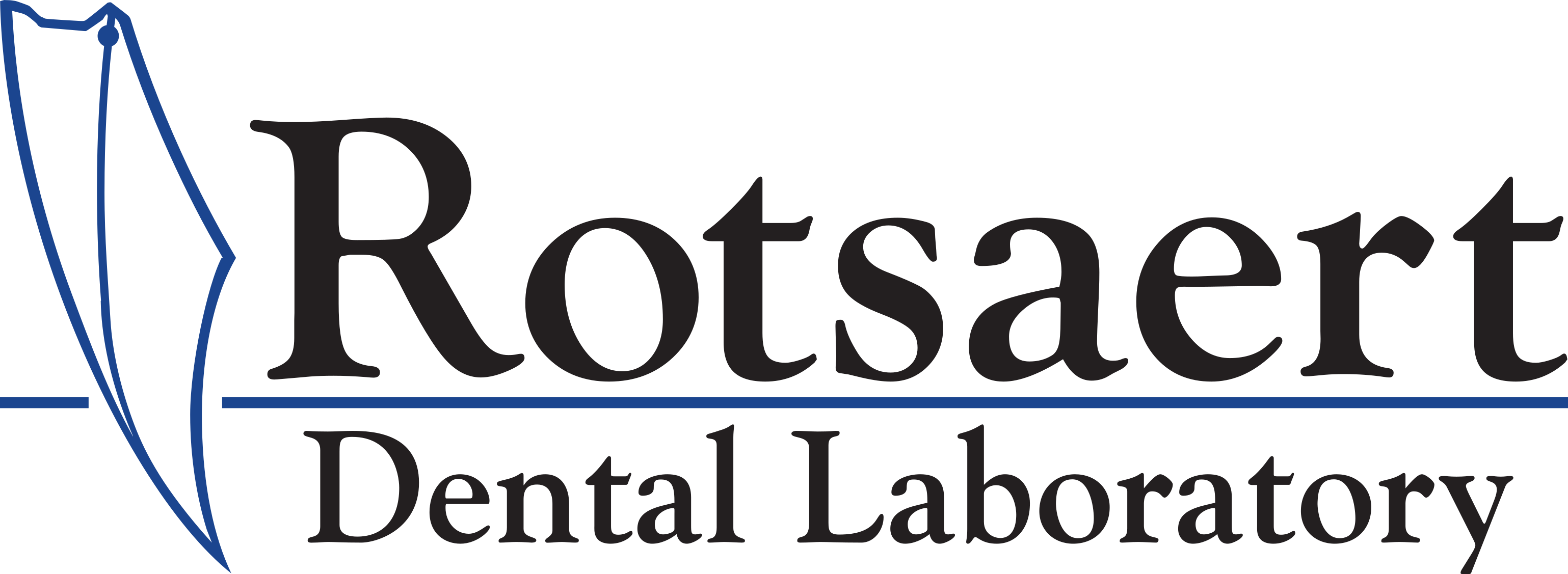Purpose:
Rotsaert Dental Laboratory, the corporation, its owners and its employees, are aware of the need to disinfect the various dental appliances they work with, as a required task under current standards of practice. The purpose of this policy is to prevent the transmission of infectious diseases and outlines procedures for infection control in our dental laboratory.
Scope:
This policy applies to all full and part-time co-workers, patients, clients and business associates who are in contact with the lab.
Definitions:
Barrier Protection: Physical barriers are called Personal Protective Equipment (PPE), and in the dental laboratory setting include gloves, masks or face shields, eyewear and protective clothing (gowns, laboratory coats, uniforms).
Disinfection: is a process that destroys microorganisms. Sterilization is a process by which all forms of life, including bacterial spores, are destroyed. Disinfection is generally less lethal to pathogenic organisms than sterilization. In Canada, disinfectants for use in dental practice have a drug identification number (DIN) issued by Health Canada, which is shown on the label. The product label also presents the main set of information that the manufacturer is legally required to provide, and the label contents are monitored before issuance of the DIN.
The ideal surface disinfectant:
- Offers rapid, broad-spectrum microbial kill;
- Offers residual activity;
- Offers antimicrobial activity in the presence of bioburdens such as blood or sputum;
- Offers minimal toxicity;
- Has compatibility with the environmental surfaces to be treated;
- Is non-staining, and hypoallergenic;
- Has an effective shelf-life;
- Is unaffected by hard water;
- Is odourless and simple to use.
Non-critical items: Cleaning & tuberculocidal intermediate-level disinfection are required. Items do not touch mucous membranes or broken skin. Examples include receiving areas, case pans and articulators.
Policy:
Hand Washing:
Hands must be always washed at the start of each day, before gloving, after removal of gloves, and after touching inanimate objects likely to be contaminated by body fluids from patients. Handwashing with plain soap and water is adequate, as soap and water will remove transient microorganisms.
Receiving Area:
Countertops and work surfaces shall be cleaned and then disinfected daily with an appropriate surface disinfectant, used according to manufacturer directions.
Incoming Cases:
All cases shall be disinfected as they are received. Gloves shall be worn during the disinfecting process and shall be removed before touching any other equipment, such as telephones, computers, scanners, and carts. Containers shall be disinfected after each use. Packing materials shall be discarded to avoid cross-contamination.
Production Area:
Persons working in the production area shall wear a clean lab coat or uniform (Drivers) and protective eyewear. Face masks shall be worn when using materials that may become airborne. Gloves shall be worn when using chemical agents that may damage the skin. Work surfaces and equipment shall be kept free from debris and disinfected daily.
Outgoing cases:
Each case shall be disinfected before it is returned to the dental office.
Stone models are heat-tolerant and shall be steamed. Removable prostheses shall be rinsed with mouthwash and placed in a plastic bag, plastic container or wrapped in plastic wrap. Crown and Bridge/Implant prostheses (excluding any etched prosthesis) shall be cleaned in the Ultrasonic unit with an ultrasonic general-purpose cleaner, rinsed, air-dried and placed in a plastic container or wrapped in plastic wrap.
Processing Impressions and Trays:
Impressions shall be rinsed under running tap water and then immersed in a tuberculocidal disinfectant prepared according to the label instructions for surface or immersion disinfection. After the manufacturer-recommended contact time has elapsed (usually 10 to 30 minutes), the disinfected impression shall be thoroughly rinsed under tap water to remove any residual antimicrobial chemicals and gently shaken dry.
Other:
Articulators, case pans, and other equipment that make no patient contact but require cleaning and disinfection shall be disinfected by spraying with a tuberculocidal disinfectant, rinsing, and drying.
Cleaned and disinfected: Benchtops, work areas, floors, sinks, coffee stations, lunchroom, restrooms.
No food shall be displayed or consumed in production areas, benches tops and work areas where cases or chemicals are present.
It is recommended that the dental office be responsible for final disinfection procedures prior to placing the prosthesis in the patient’s mouth.
